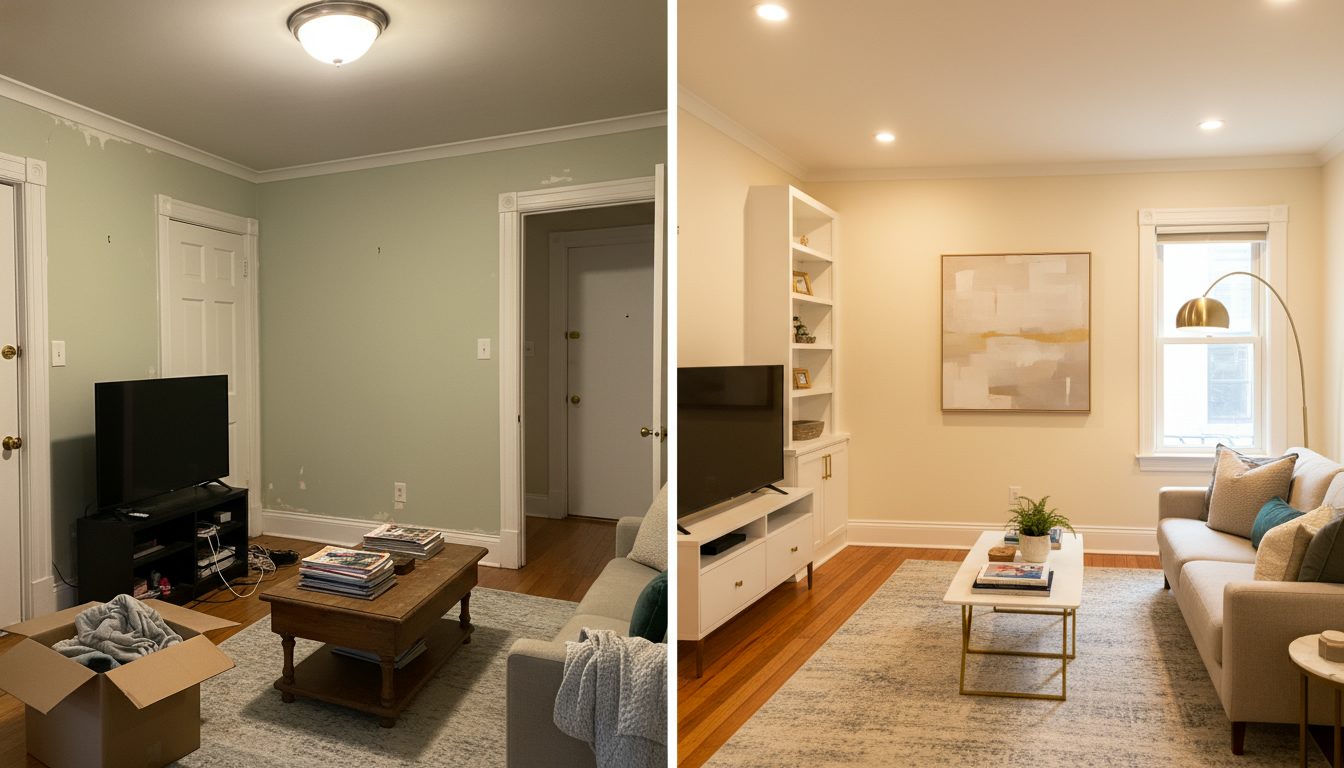Should I fix minor cosmetic issues?
Fix small cosmetic flaws now or risk losing thousands at closing — the smart seller fixes the visible stuff.
Short answer: Yes — fix minor cosmetic issues that buyers notice or photos amplify. Not every ding needs a contractor. Focus on high-impact, low-cost fixes that increase perceived value, speed up offers, and reduce negotiation credits.
Why this matters
Buyers decide in seconds. Online photos and first impressions drive showings. Small flaws become big objections. A buyer sees a chipped countertop or scuffed baseboard and instantly imagines deeper problems. You lose trust, leverage, and sometimes buyers.
High-impact fixes to prioritize
- Paint: Repaint high-traffic rooms and trim in neutral tones. Cost-effective and transforms perception.
- Caulking & grout: Clean, re-caulk, and re-grout around tubs, sinks, and windows.
- Hardware: Replace dated cabinet knobs, switch plates, and faucets—simple swaps that look curated.
- Lighting: Bright, warm bulbs and clean fixtures. Light sells rooms.
- Minor carpentry: Fix loose baseboards, tighten doors, and repair window screens.
- Curb appeal: Mow, trim shrubs, add fresh mulch and a clean doormat.
When to skip the fix
- Structural issues: Don’t DIY. Disclose and price accordingly.
- Over-personal improvements: Custom finishes that won’t appeal broadly (bold wallpaper, neon paint).
- Extremely costly repairs with low ROI: Replace only if appraiser or lender requires it.
DIY vs professional
- DIY: Painting, cleaning grout, replacing hardware, staging furniture placement. These save money and are fast.
- Hire a pro: Electrical, plumbing, roof, or anything that affects safety or building code.
A simple ROI rule
If the fix costs less than 1% of expected sale price and visibly improves photos or first impressions, do it. Example: On a $700,000 house, a $3,000 cosmetic refresh that shortens market time by weeks and avoids a price reduction is a smart investment.
How staging ties in
Staging amplifies small repairs. Clean lines, neutral colors, and decluttered rooms make minor fixes invisible and major features pop. Buyers buy on emotion; staging creates the emotion.
Quick checklist for sellers
- Walk the home as a first-time buyer. 2. Fix visible damage in photos. 3. Neutralize colors and scents. 4. Brighten, de-clutter, and stage. 5. Get a pro consult if unsure.
Final word
Fixing minor cosmetic issues is usually worth it. It costs little, reduces negotiation friction, and increases perceived value. When done strategically, cosmetic prep and staging turn lookers into buyers.
Need a targeted pre-sale plan? I provide clear, ROI-driven staging and repair guidance tailored to your market. Contact Tony Sousa at tony@sousasells.ca or 416-477-2620, or visit https://www.sousasells.ca





















